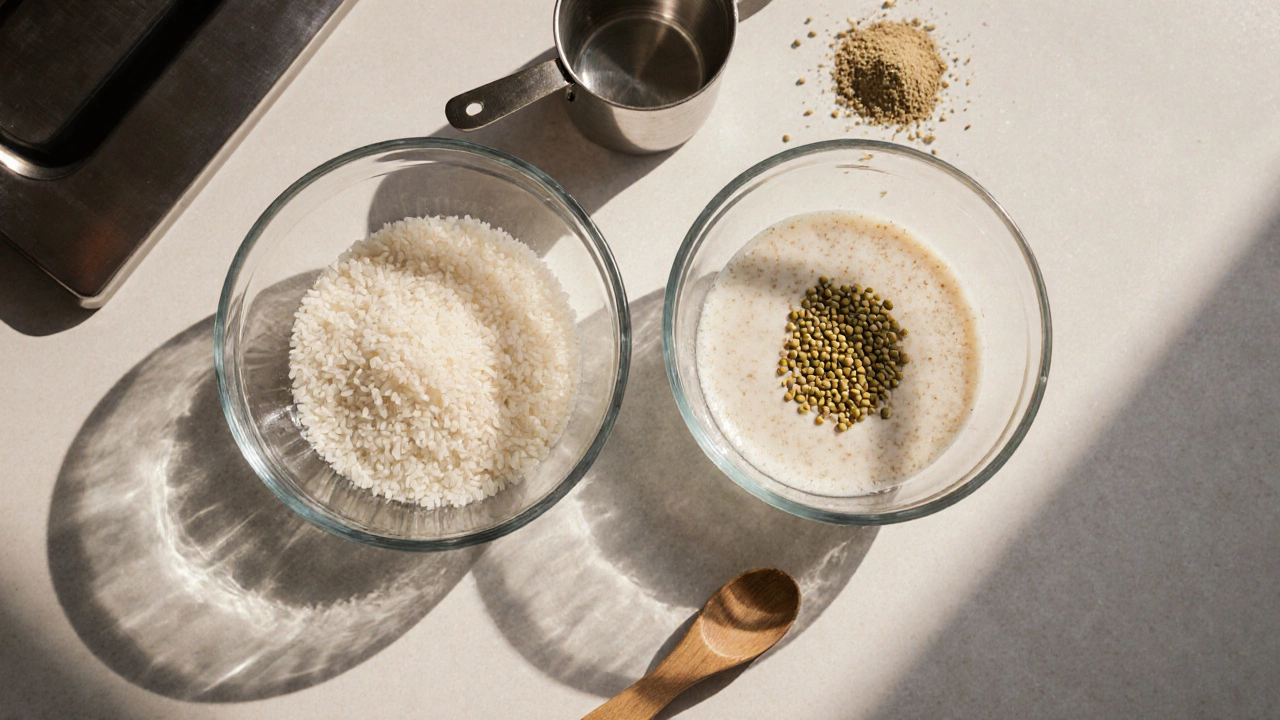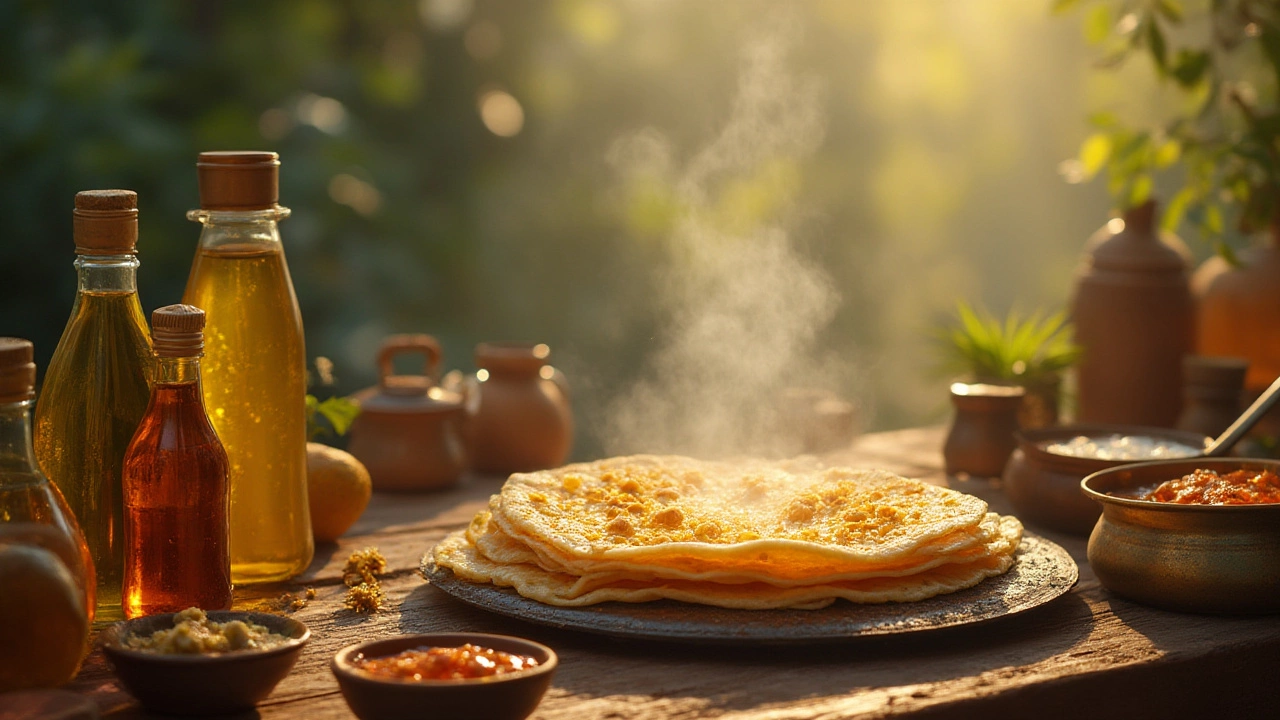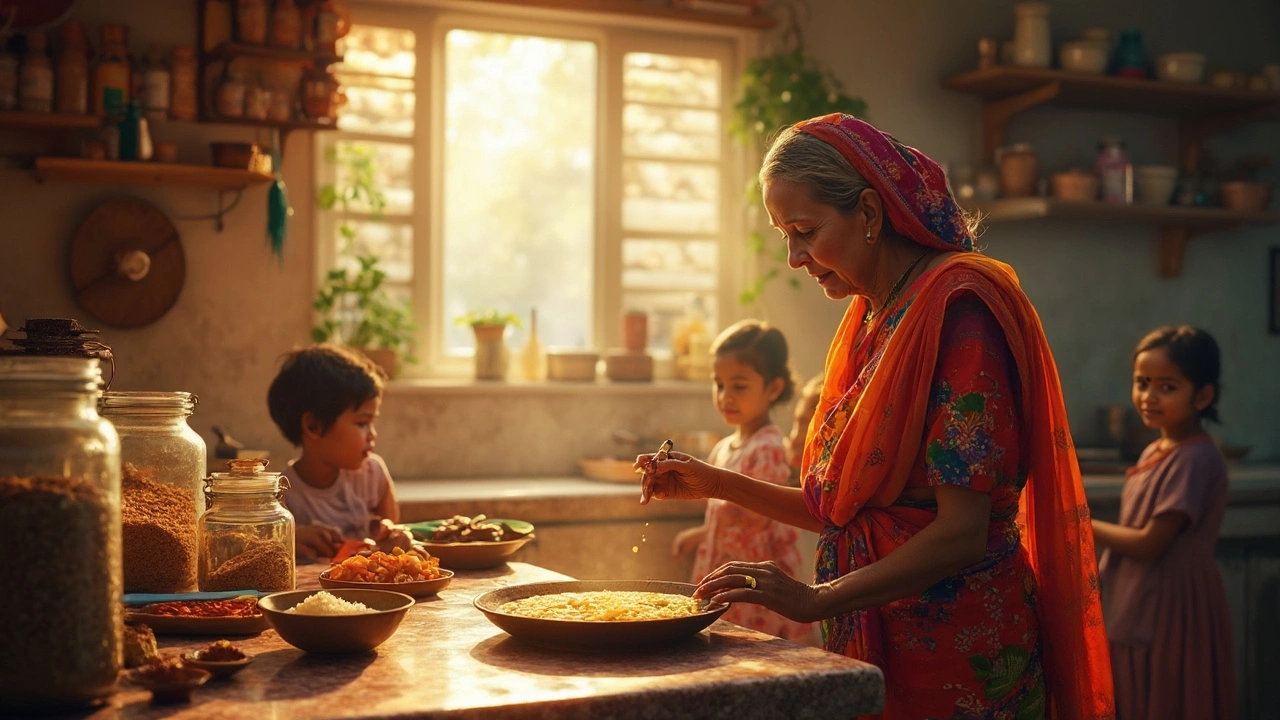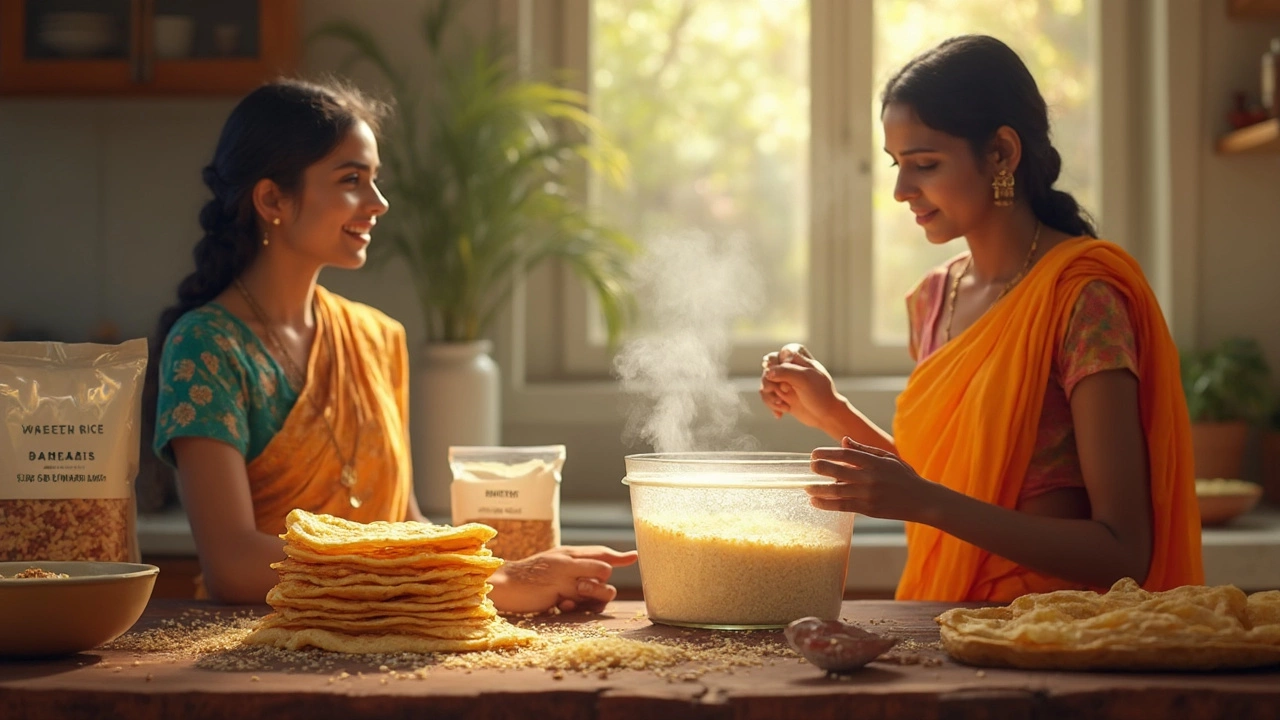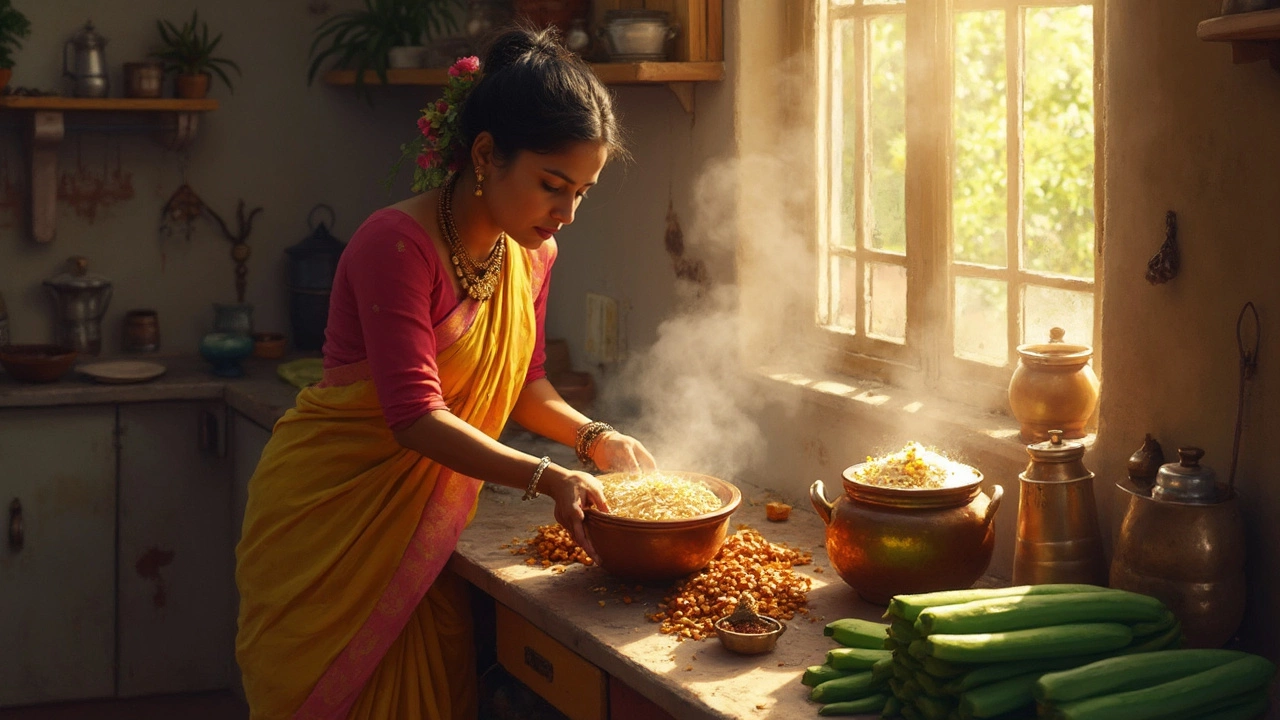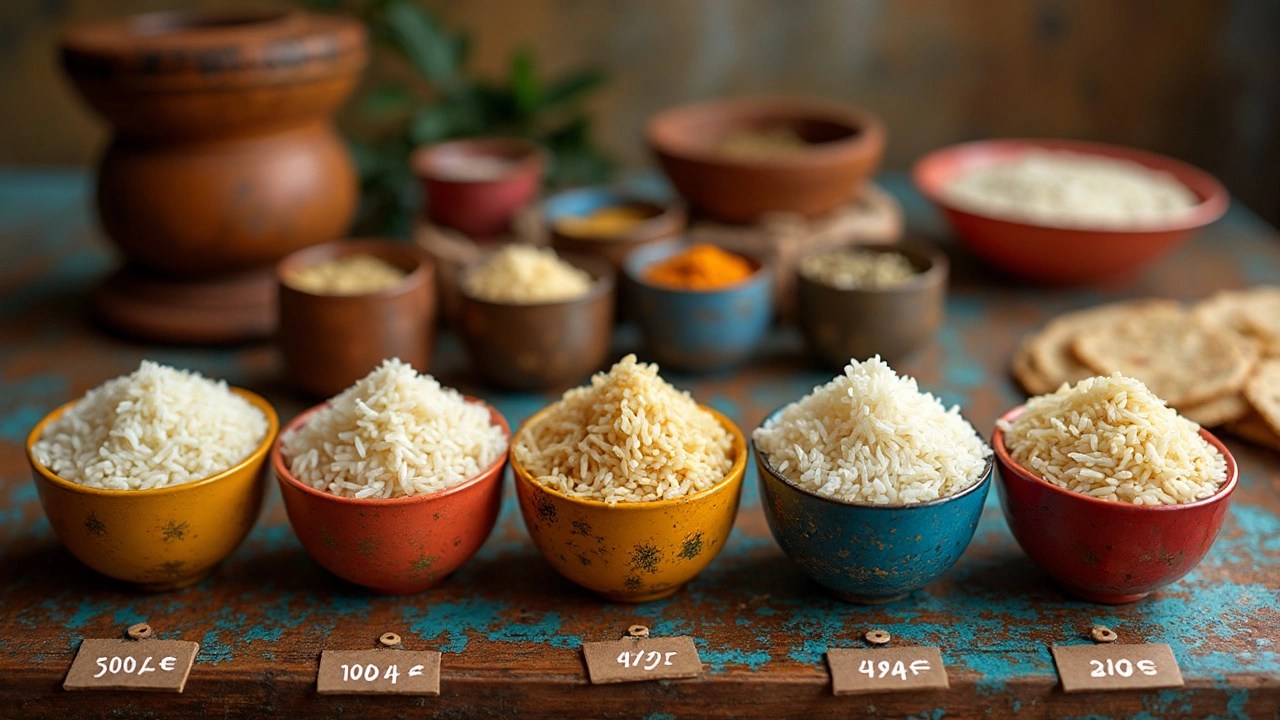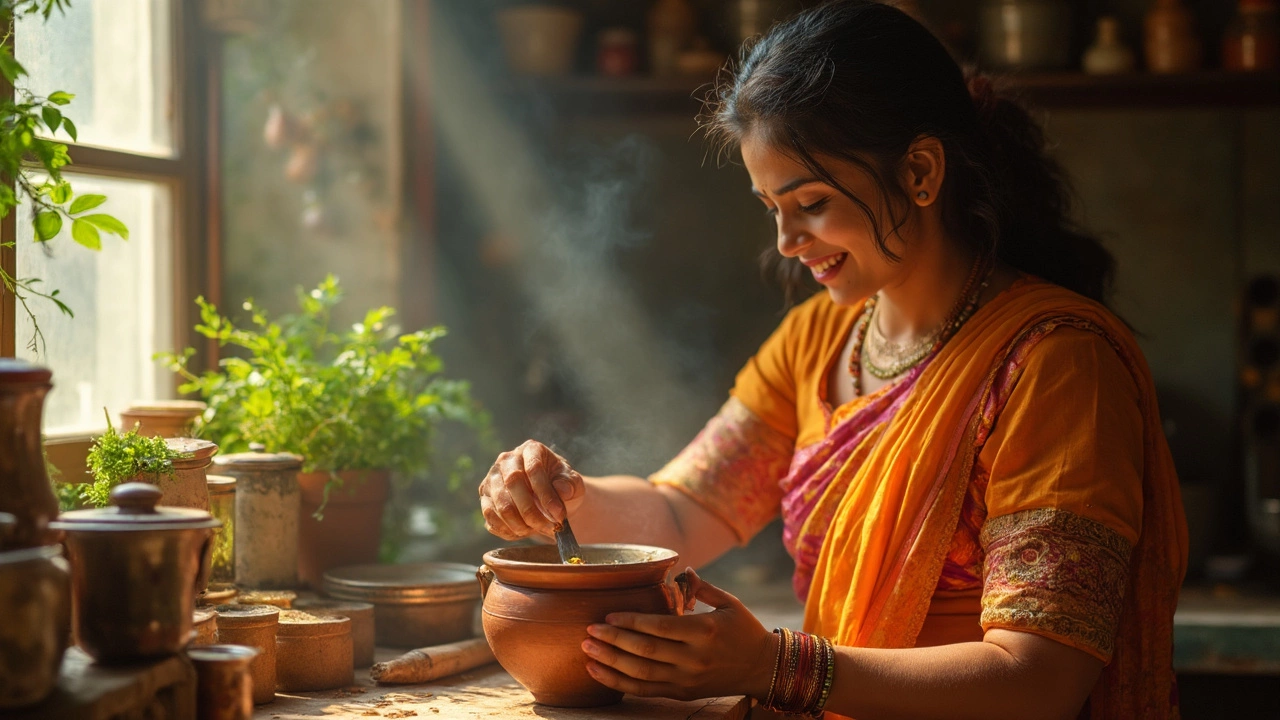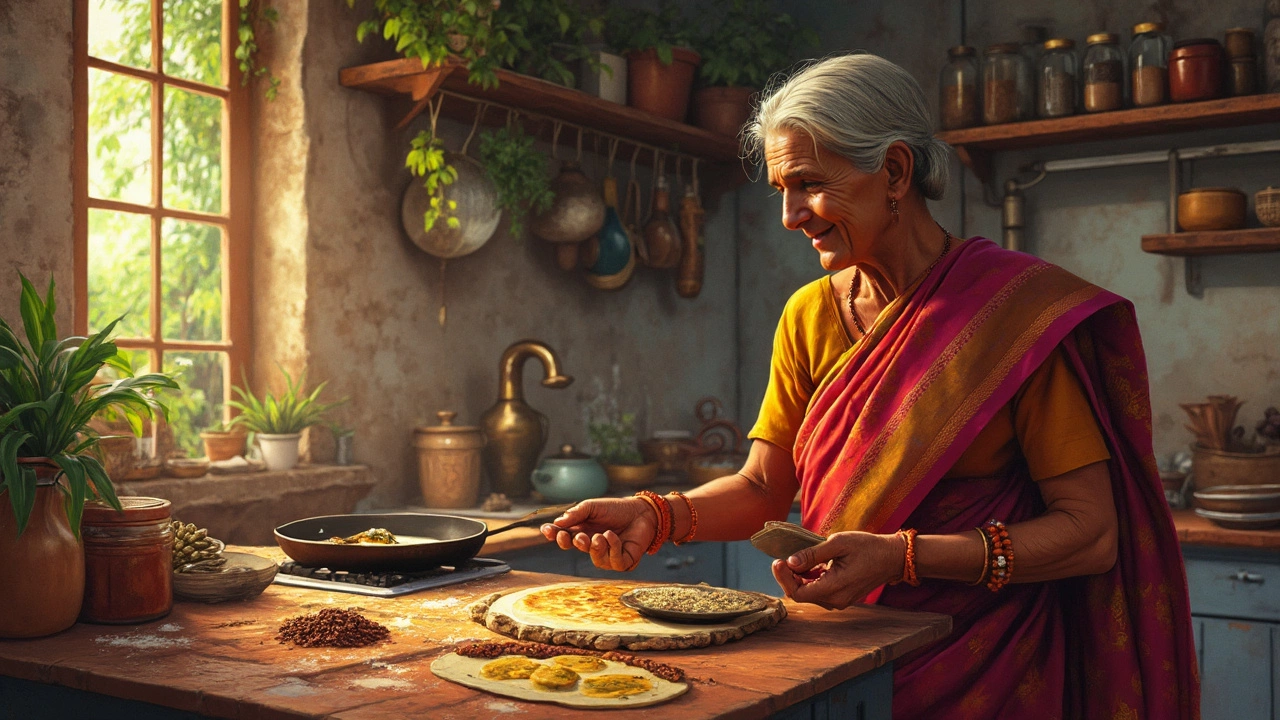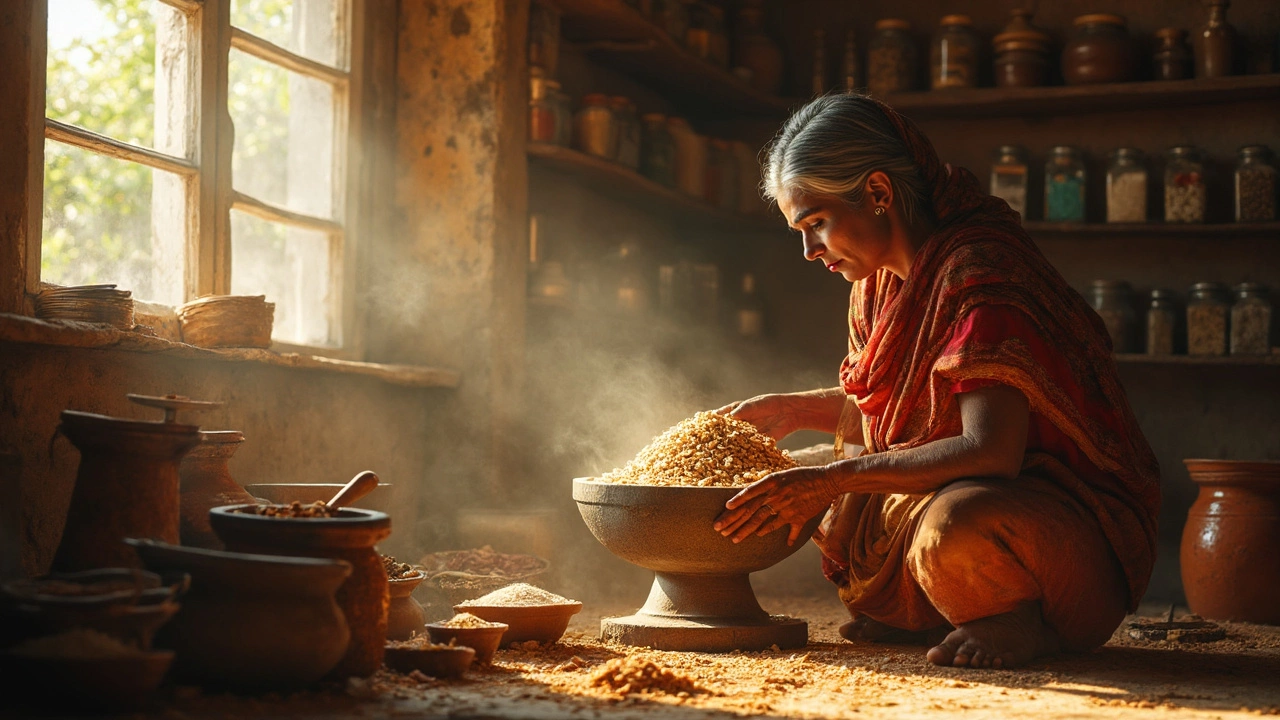Dosa and Batter Recipes
When working with Dosa batter, a fermented blend of rice and lentils that creates the thin, crispy crepes beloved across South India. Also known as South Indian crepe batter, it lets you experiment with spices, grains, and cooking methods.
One of the biggest players behind a good batter is Urad dal, the black gram that supplies protein and the sticky texture needed for fermentation. Pair it with the right type of rice – often a short‑grain or parboiled variety – and you set the stage for a batter that ferments quickly and holds together when spread thin. Dosa batter requires a warm, stable environment; around 30‑35 °C is ideal for the natural microbes to do their work. If the temperature dips, you’ll see slower rise or a flat batter, which is why many home cooks use a warm oven or a heated mat.
Key Factors for Perfect Dosa Batter
Fermentation itself is a living process. Fermentation, the conversion of sugars into lactic acid by wild bacteria not only adds the signature tang but also softens the grain structure, making the final crepe light and airy. Adding salt too early can inhibit these microbes, so most chefs wait until the batter is fully risen before sprinkling it in. This timing trick keeps the rise high while still delivering that salty punch on the plate. Another often‑overlooked detail is the oil used for cooking. Different oils affect crispness and flavor – for example, a high‑smoke‑point oil like sunflower or a touch of ghee can give a golden edge without burning. Choosing the right oil is a simple way to upgrade even a basic batter. Lastly, water ratio matters. Too much water makes the batter runny, leading to soggy dosas; too little keeps it thick and hard to spread. A good rule of thumb is a pour‑able consistency that coats the back of a spoon but still holds shape when poured onto the pan.
People also ask whether rice and urad dal can be soaked together. The short answer: it saves time, but soaking them separately allows you to control each grain’s hydration level more precisely, which can improve texture. If you’re in a hurry, a combined soak works fine as long as you rinse well and grind to a smooth paste. Rubbery batter is another common complaint. In most cases it stems from over‑grinding the rice, not adding enough fermentation time, or using a high‑ratio of urad dal. Adjusting the grind size, extending the fermentation, and balancing the dal‑to‑rice ratio usually fixes the problem.
Mastering dosa batter is easier than you think. Below you’ll find articles that dive deep into oil choices, sleepiness after a dosa feast, common fermentation hiccups, salt timing, rice options for US shoppers, soaking schedules, and quick‑ferment hacks. Whether you’re a first‑timer or a seasoned pro, the collection gives you actionable tips to fine‑tune every step of the process and serve up dosas that are crisp, flavorful, and just the way you like them.
Dosa Batter Fermentation Time: How Many Hours Are Needed?
Learn the exact hours needed to ferment dosa batter, how temperature affects timing, and practical tips for perfect dosas every time.
Read moreBest Oils for Dosa: Choosing the Ideal Oil for Crispy, Tasty Dosas
Wondering which oil makes the crispiest dosa? Explore the best oils, their health notes, taste, and tips to achieve next-level dosas every time.
Read moreWhy Do We Feel Sleepy After Eating Dosa? Understanding the Science and Solutions
Ever get sleepy after enjoying a crispy dosa? Uncover the reasons behind that post-dosa nap, the science behind digestion, and tips to avoid drowsiness after your meal.
Read moreDosa Batter Not Fermenting? Here’s Why and How to Fix It
Struggling with dosa batter that just refuses to ferment? You’re not alone. This article breaks down exactly why your dosa batter isn’t bubbling up and gives real solutions, from controlling temperatures to fixing tricky ingredient problems. Discover sneaky mistakes people make with rice, dal, water, and even salt. With practical advice and science-backed tips, get your next batch of batter rising like a pro.
Read moreShould We Add Salt to Dosa Batter? The Truth About Tasty Dosas
Salt in dosa batter is a hot topic in every Indian kitchen. Some say it ruins fermentation, others won’t skip it for taste. This article digs into how salt really affects your dosa batter, what happens during fermentation, and the best time to add it. Get simple tips for crisp, flavorful dosas every time you cook.
Read moreWhich Rice to Use for Dosa Batter in USA: Your No-Nonsense Guide
Not sure which rice works best for dosa batter in the US? This article cuts through the confusion with clear advice on the best rice varieties you can find here, plus smart tips to help your dosa come out crispy and authentic. Get to know how local options differ from the rice used in India and what substitutes won’t mess up your batter. If you want South Indian dosas without a trip to the specialty store, this is the guide you need. Skip the guesswork and get your batter just right, whether you're a beginner or have been making dosas for years.
Read moreHow Many Hours to Soak Rice and Urad Dal for Idli Batter
Getting the soaking time right for rice and urad dal is the secret to fluffy idlis. This guide breaks down exactly how long to soak each ingredient and why it matters. You'll learn some smart tricks for fermenting your batter and how temperature can mess with the process. I've included tips for tweaking the soaking time if you're short on time or dealing with chilly weather. Your idlis are about to get a makeover—soft, spongy, and full of character.
Read moreHow Long Should Rice Be Soaked for Dosa: Tips for the Perfect Batter
Soaking rice for dosa batter is crucial for achieving the right texture and flavor. The soaking time can affect how the dosa turns out, from crispy to soft. This article explores the ideal soaking time for rice, why it matters, and shares some handy tips and tricks to improve your dosa-making skills. Whether you're new to making dosa or looking to perfect your recipe, this guide is full of practical advice to help you succeed.
Read moreCan We Soak Rice and Urad Dal Together for Dosa?
Dosa lovers often wonder if soaking rice and urad dal together is a time-saving tactic or a recipe for disaster. The process of making dosa batter involves specific steps that ensure the right texture and taste. This article explores the pros and cons of soaking these ingredients together and provides practical tips for creating the perfect dosa. Learn how to make your dosa-making routine a breeze while retaining that authentic flavor and crisp texture.
Read moreWhy is My Dosa Batter Rubbery?
If your dosa batter is turning out rubbery, you're not alone. It's a common issue that can stem from various factors, such as incorrect fermentation or ingredient ratios. Understanding the right techniques can transform your dosa game. Discover tips and tricks to achieve that perfect, crispy dosa every time.
Read moreIs Dosa Healthy or Not? Here's the Truth
Dosa, a beloved South Indian dish, is often caught in the debate of being healthy or unhealthy. This article uncovers its nutritional facts and possible health benefits, offering insights into adapting recipes for a healthier version. Discover tips on making dosas part of a balanced diet while ensuring you enjoy its delicious taste. Learn how the choice of ingredients and cooking methods can influence its health impact.
Read moreWhy Does Dosa Batter Turn Rubbery?
Discover the reasons why dosa batter can become rubbery and explore tips to get the perfect texture. Learn about the importance of ingredients like rice and lentils, how fermentation works, and what kitchen tools can help make the best dosa. Understand common mistakes and how to fix them. Make delicious, crispy dosas with these expert insights.
Read more